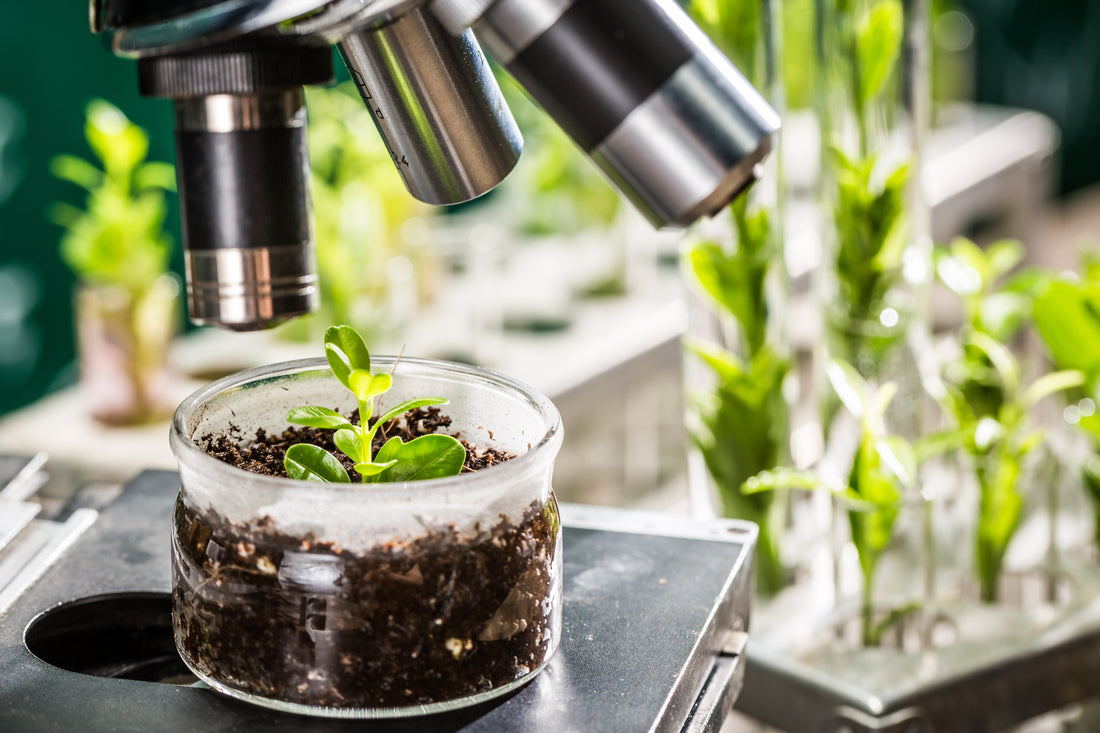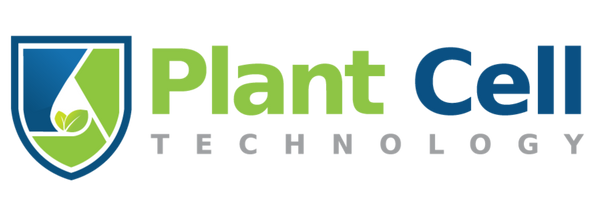
Techniques To Identify Plant Pathogens (part-2)
As a content and community manager, I leverage my expertise in plant biotechnology, passion for tissue culture, and writing skills to create compelling articles, simplifying intricate scientific concepts, and address your inquiries. As a dedicated science communicator, I strive to spark curiosity and foster a love for science in my audience.


Plant pathogens cause a huge loss in the productivity of crops and sometimes lead to total crop loss. The solution to this trouble is to identify pathogen infections in plants at their early stage and eliminate them.
Introduction
Plant pathogens cause a huge loss in the productivity of crops and sometimes lead to total crop loss. The solution to this trouble is to identify pathogen infections in plants at their early stage and eliminate them.
In the first part of this article, you’ve learned how to control the spread of plant diseases and that the techniques to identify plant pathogens is categorized into two groups:
- Direct Identification Technique
- Indirect Identification Technique
In the direct identification techniques you have learned about five techniques: Polymerase Chain Reaction (PCR), Fluorescence in-situ Hybridization (FISH), and Enzyme-Linked Immunosorbent Assay (ELISA).
In this article, we will cover two other direct pathogen identification techniques: Immunofluorescence, and flow cytometry; and indirect pathogen techniques.
Direct Detection Methods
The direct detection of diseases involves molecular and serological methods that could be used for high-throughput analysis when a large number of samples need to be examined. The pathogens responsible for diseases, such as bacteria, fungi, and viruses, are detected directly in these methods, which allows accurate identification of the diseases/pathogens.
Immunofluorescence
In this method, antibodies are chemically labeled using fluorescent dyes to see molecules under a light microscope. It’s mainly used to analyze microbiological samples and detect pathogen infections in plants.
For pathogen detection, a thin tissue section is fixed to a microscopic slide, Then detection is achieved by conjugating a fluorescent dye with a specific antibody and observing the distribution of the target molecule.
The technique has been used to detect onion crop infection, caused by a fungus Botrytis cinerea, and also Solanum dulcamara which causes crown rot in potatoes by combining with the FISH technique.
The only limitation of the technique is false-positive results due to photobleaching. This can be overcome by:
- Reducing the intensity and duration of light exposure
- Increasing the concentration of fluorophores
- Employing more robust fluorophores that are less sensitive to photobleaching.
Flow Cytometry
It’s a laser-based technique, which is widely used to rapidly analyze single cells when they pass through a detection apparatus in a liquid stream. Its applications include cell sorting and counting, protein engineering, and biomarker detection.
The technique combined with the FISH technique has been used to detect foodborne bacterial pathogens. It can accurately detect 104 colony forming units (CFU) per milliliter within 30 minutes of the time.
Moreover, it can also be used to detect soil-borne bacteria, such as Bacillus subtilis in mushroom composts and for viability evaluation.
Indirect Detection Methods
The indirect detection method detects plant disease based on various characteristics or parameters. I include temperature change, transpiration rate change, morphological change, and volatile compounds released by infected plants. The technique has also been used to detect biotic and abiotic stresses in plants.
Some of the extensively used indirect detection methods in labs are given below.
Thermography
The technique detects and images the surface temperature difference in plants’ leaves and canopies by emitting infrared rays and capturing them using thermographic cameras.
Phytopathogens affect the regulation of water loss by stomata in plants. The disease caused by these pathogens leads to temperature change, which can be visualized by using thermographic imaging. Moreover, it can also detect the heterogeneity in the infection of soilborne pathogens.
The limitation of this technique is that it’s sensitive to environmental changes that can affect the measurements during experiments. In addition, it lacks disease specificity, thus, can’t be used to distinguish between diseases and identify infection types.
Fluorescence Imaging
The technique helps to visualize biological processes occurring in a living organism. In plants, it measures the chlorophyll fluorescence on the leaves when light falls on them. The change in fluorescence parameters helps to analyze pathogen infections.
The technique has been used to detect temporal and spatial variations of chlorophyll fluorescence in leaf rust and powdery mildew infections of wheat leaves at 470 nm.
Apart from its potential functions, the use of this technique is limited in labs.
Hyperspectral Techniques
It can be used to analyze plants’ complete health by analyzing a wide spectrum of light, between 350 and 2500 nm falling on the plant surface. The technique is predominantly used for plant phenotyping and identification of plant diseases in commercial-scale agriculture.
It’s a robust technique that provides a rapid analysis of imaging data in three dimensions, with X- and Y- axes for spatial and Z- for spectral. The information help scientists to get detailed information of plants’ health in any area.
The technique has been successfully used to identify Phytophthora infestans infection of tomato, Magnaporthe grisea infection of rice, and Venturia inaequalis infection of apple trees.
Gas Chromatography
It’s a non-optical method that doesn’t involve the use of microscopic imagery. It profiles the volatile organic compounds of infected plants that are released when any type of stress is experienced by plants. It’s used to identify the nature and type of plant infections or disease diagnosis
For example, p-ethyl guaiacol and p-ethylphenol are released by the fungus, Phytophthora cactorum, which causes crown rot diseases in strawberries.
The volatile compounds are also released when plant leaves are damaged. The green leaves volatiles, including cis-hexenyl acetate, cis-3-hexenol, and hexyl acetate are observed to be released during herbivore invasion.
The emitted volatile compounds are analyzed by gas chromatography (GC), which indicates the particular disease.
Though, you might say there are so many techniques that can be used for pathogen detection! However, their application is limited due to:
- Destructive nature
- Expensive procedure
- Requirement of a skilled technician
- Requirement of a proper lab set-up
- Time-consuming process
- No possibility of real-time monitoring
Well, identification of the pathogen infection is the first step to prevent the spread of these diseases and enhance crop productivity. However, the technique has higher efficiency to produce disease-free plants in the tissue culture of plants.
Tissue culture is an advanced approach that allows culturists to produce disease-free plants. The technique combined with several other high-throughput techniques is used in labs for developmental or genetic studies.
If you are someone into plant tissue culture, then check out Plant Cell Technology’s tissue culture resources and products designed to enhance your tissue culture experiences. Furthermore, Tissue culture offers on-site consulting services to cannabis culturists, which also involves the detection and elimination of pathogens from your cultures—especially Hop Latent Viroid (HpLVD).
Choose Plant Cell Technology to Enhance Your Cannabis Tissue Culture Experience
To help the cannabis culturists with their tissue culture processes and help them to pass through the challenging phases, PCT is providing world-class consulting services.
The consulting services are available in two forms: one-on-one phone calls and on-site visits. So, if you need an instant solution for your specific challenges you can have a one-on-one call with our scientists and get your answers instantly.
However, if you are someone building a cannabis tissue culture lab or are already an established lab that is looking to train its staff or wants solutions for pathogen eradication in its commercial-scale plants, you can choose an on-site visit consulting service. Our team will visit your lab and will guide you through the whole process.
The services included in the on-site visits are:
- Blueprint, Budget, & Equipment: Build and operate a successful tissue culture lab. Media Preparation: 2 sets of proprietary media preparation SOPs (4 in vitro shoot multiplication protocols and 5 in vitro rooting protocols along with coaching on how to conduct factorial trials).
- Micropropagation: How to select, surface sterilize, and induce nodes into media for removal of surface pathogens and in vitro cloning applications.
- Meristem Dissection: How to dissect apical meristem to remove viruses including HpLvd, Cannabis Cryptic Virus, Lettuce Chlorosis Virus, and more.
- Synthetic Seed and Cryopreservation: Long term genetic storage solutions.
- Pathogen Remediation by Media Amendments: How to remove viruses, systemic fungi, bacterial infections, and endophytes.
- Gender and Pathogen Screening by PCR: Eliminate male plants, identify cannabinoid ratios, and protect your mothers from pathogens and pests
Blog Categories
View by Level
Popular Blogs

How Samantha Bridges the Gap Between the Nursery and the Lab
The Introduction Building a tissue culture program from the ground up requires more than just scientific knowledge—it requires the grit...
Read More
Understanding The Synthetic Seed Technology
Introduction Let’s be honest: traditional plant propagation can be a logistical nightmare. If you’re working with recalcitrant species—those stubborn plants...
Read MoreSubscribe to Our Newsletter







Join the conversation
Your email address will not be published. Required fields are marked